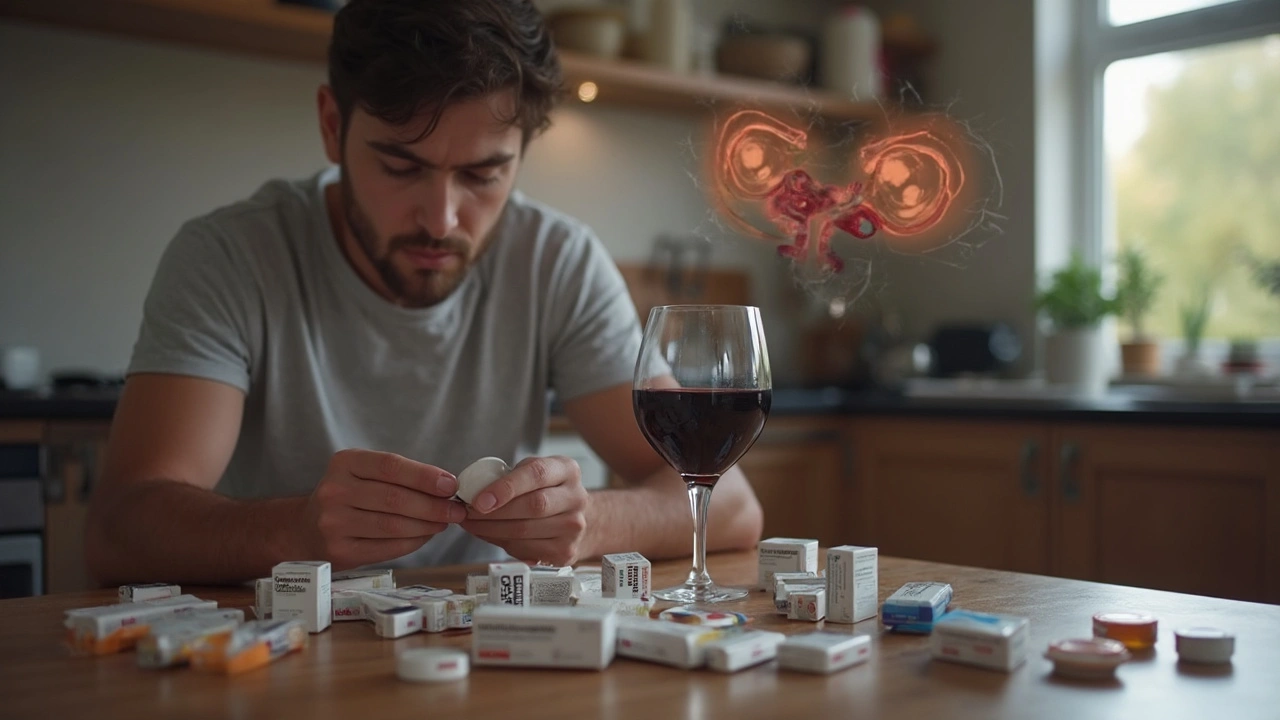Alcohol Interactions: Stay Safe When Mixing Drinks and Medications
We all enjoy a drink now and then, but the moment you add a prescription or an over‑the‑counter pill, the game changes. Alcohol can boost side effects, make a drug less effective, or even cause a dangerous reaction. Knowing the basics helps you avoid nasty surprises at the end of the night.
First, think of alcohol as a mild depressant. It slows down the nervous system, just like many meds do. When two depressants meet, they can amplify each other and make you feel far more drowsy or dizzy than you’d expect. On the flip side, some drugs speed up your metabolism, and alcohol can interfere with that process, leaving the medication sitting in your system longer than intended. The result? Higher risk of toxicity or a weaker therapeutic effect.
Common Meds That Don't Mix with Alcohol
Antibiotics – A few antibiotics, like metronidazole (Flagyl) and tinidazole, can cause a sudden flush, rapid heartbeat, and nausea if you drink. Even antibiotics that don’t have a classic reaction can still make your stomach upset when combined with alcohol.
Pain relievers – Opioids (e.g., codeine, oxycodone) and even non‑steroidal anti‑inflammatories (NSAIDs) like ibuprofen can increase stomach bleeding risk. Add alcohol and you raise that risk even higher.
Blood thinners – Meds such as apixaban, warfarin, or clopidogrel (Plavix) already thin your blood. Alcohol can either boost or reduce their effect, making clotting unpredictable. A small drink might not seem like a big deal, but it can swing your INR levels dramatically.
Antidepressants and anti‑anxiety drugs – SSRIs (like fluoxetine) or benzodiazepines (like diazepam) already cause drowsiness. Alcohol adds to that, leading to extreme sedation or even respiratory trouble.
Anticonvulsants – Drugs such as lamotrigine (Lamictal) or carbamazepine can have their seizure‑preventing power reduced when you drink. In some cases, alcohol can trigger a seizure itself.
These are just a few examples; many other meds have hidden alcohol warnings. If you’re unsure, check the patient information leaflet or ask your pharmacist.
Tips to Keep Your Night Safe
1. Read the label. Look for “Alcohol may intensify side effects” or “Do not drink while taking this medication.” The warning is usually in bold.
2. Set a limit. If your doctor says it’s okay to have a drink, stick to one standard drink and watch how you feel. Some people can’t handle even a single glass.
3. Choose low‑risk drinks. Clear spirits mixed with soda have less sugar and fewer additives than sweet cocktails, which can interact with certain meds like diabetes drugs.
4. Stay hydrated. Water helps your liver process both alcohol and medication by flushing out toxins faster.
5. Plan ahead. If you have a day‑long medication schedule, consider having a alcohol‑free evening before a big dose.
6. Know the signs. If you feel unusually dizzy, nauseous, or have a rapid heartbeat after a drink, stop drinking and seek medical advice.
7. Keep a medication list. Having a quick reference of what you’re taking makes it easier to spot risky combos when you’re out with friends.
Remember, the safest choice is often to skip alcohol while on a new prescription. Once you’ve finished the course or your doctor says it’s fine, you can enjoy a drink without the extra worry.
Bottom line: Alcohol and medication don’t always play nice. A quick check, a sensible limit, and a bit of common sense go a long way toward keeping your night fun and your health intact.
5 Common OTC Drugs That Should Never Be Mixed With Alcohol: Risks, Effects, and Warnings
Mixing alcohol with over-the-counter meds can cause unexpected and dangerous side effects, from stomach upsets to deadly reactions. This guide uncovers five everyday medicines—including Imodium—that become risky when you drink, and explains what actually happens in your body when you ignore the warning labels. With stats, expert tips, and practical examples, you'll get the realities about which OTC drugs you need to handle with extra care around alcohol.
